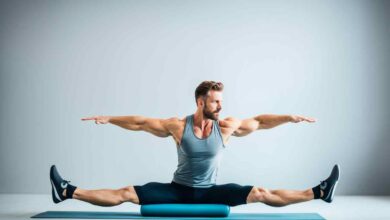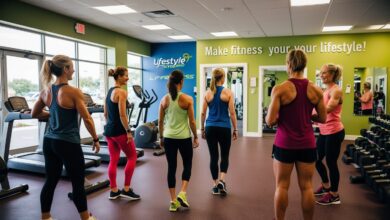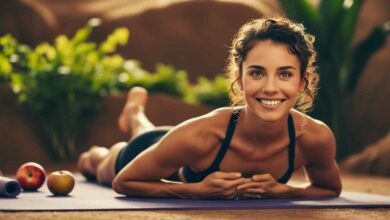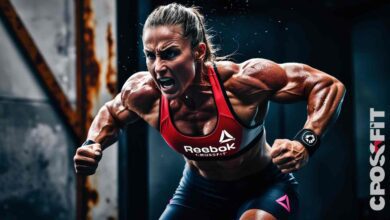Discover the Power of Pilates: And Its Health Benefits
"Uncover the Secrets to Strength, Flexibility, and Wellness"

Pilates, developed in the early 20th century by Joseph Pilates, is a low-impact exercise method that focuses on core strength, flexibility, balance, and overall body awareness. Initially known as “Contrology,” this form of exercise was designed to connect mind and body, promoting mindful movements that improve health and wellness. Today, Pilates has evolved to become one of the most popular exercise methods around the world, with dedicated studios and instructors who guide practitioners.
The Fundamentals of Pilates
Pilates emphasizes precision, control, and mindful breathing to achieve balanced body movements. Its exercises target the body’s core—the abdominal, back, and pelvic muscles—and require steady control over these muscle groups. Pilates exercises are typically performed on a mat or with specialized equipment like the Reformer, Cadillac, and Wunda Chair. Each piece of equipment is designed to assist and challenge the body in unique ways, enhancing.
The central principles of Pilates include concentration, control, centering, flow, precision, and breath. By focusing on these principles, practitioners learn to move efficiently, maintaining a stable core and mindful posture throughout their activities. While Pilates is often thought of as primarily a physical exercise, its holistic approach encourages a mental connection to movement, offering relaxation and stress-relief benefits as well.
Core Strength and Posture
One of the most celebrated benefits of Pilates is its impact on core strength and posture. Unlike many exercises.
When core strength improves, so does posture. Poor posture can cause back pain, tightness, and even injury over time. Pilates helps individuals become more aware of their posture in daily activities, encouraging them to maintain proper spinal alignment. As practitioners learn to engage their core correctly, they also develop a strong and stable center, making other physical activities safer and more efficient.
Improved Flexibility and Muscle Tone
Flexibility is a crucial aspect of overall physical fitness, contributing to ease of movement and reducing the risk of injuries. Pilates incorporates controlled, flowing movements that gently lengthen the muscles.
Enhanced Mind-Body Connection
Pilates is not just a physical exercise; it cultivates a deep awareness of the mind-body connection. This aspect of Pilates distinguishes it from many other forms of exercise. Practitioners are encouraged to focus on their breathing, align their movements with their breath, and stay present during each exercise. This mindfulness aspect makes Pilates not only a physical workout but also a mental one.
Breathing plays a key role in Pilates, helping to oxygenate the muscles and control each movement. Deep, intentional breathing helps to lower stress levels and improve concentration. The mental clarity gained from practicing Pilates can carry over into other areas of life, helping people handle stress, stay focused, and find a sense of calm in everyday activities.
Pain Relief and Injury Prevention
Pilates has long been used as a therapeutic tool for managing pain and preventing injuries. Because of its low-impact nature, Pilates is suitable for people of all fitness levels, including those recovering from injuries or suffering from chronic pain. Pilates exercises focus on proper body alignment and core stabilization, both of which are critical.
For individuals with lower back pain, Pilates can be particularly beneficial. Studies have shown that Pilates exercises can help alleviate back pain by strengthening the muscles that support the spine and improving posture. By building a strong core, people can offload some of the stress placed on their back, leading to less pain and discomfort. Pilates can also be a valuable tool for individuals with arthritis, as it promotes gentle movement, reduces stiffness, and improves joint flexibility.
Increased Energy and Stamina
While it may seem counterintuitive, Pilates can boost energy levels rather than deplete them. The focus is on controlled breathing. The consistent practice of Pilates can also build endurance. Although Pilates sessions may not be as intense.
Stress Reduction and Improved Mental Health
The mental health benefits of Pilates are just as important as the physical ones. The concentration required for each movement, combined with the rhythmic breathing and mindful approach, allows practitioners to focus on the present moment. This can be incredibly calming and beneficial for reducing stress. By focusing on breathing and movement, Pilates helps to quiet the mind and create a sense of inner calm.
Additionally, exercise in general triggers the release of endorphins, the body’s natural mood enhancers. Pilates, in particular, encourages relaxation through controlled movements and breathing, making it a natural stress reliever. For those suffering from anxiety or mild depression, the mindful aspects of Pilates.
Improved Balance and Coordination
Balance and coordination are essential components of overall fitness, The stability and balance gained through Pilates can translate into better.
Conclusion
With regular practice, Pilates can transform the way you move, the way you think, and the way you feel. It’s more than just an exercise; it’s a way to connect with your body, improve your health, and bring balance to your life. Whether you’re a beginner or an experienced yogi, discovering the power of Pilates can open up a pathway to long-term.




